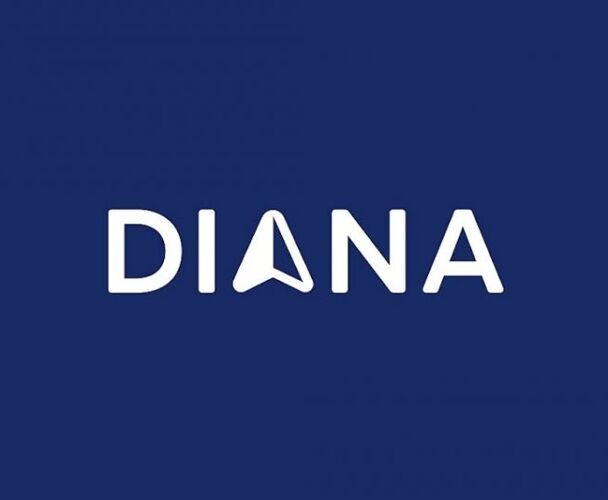How Companies Can Achieve Dual Taxonomy and BREEAM Compliance Legally and in Practice?
The EU Taxonomy Regulation[1] has become one of the most important tools in promoting sustainable development, particularly within the construction and real estate sectors. The Taxonomy is a detailed classification system that defines environmentally sustainable activities. One of its primary aims is to direct capital flows towards projects that contribute to the achievement of the EU’s climate and environmental objectives. It is essential that the Taxonomy remains a moving target, evolving continuously and, where necessary, supplemented with additional requirements, reservations, and conditions.
The construction sector holds particular significance within this system, as the life cycle of buildings and infrastructure generates not only substantial resource consumption but also considerable CO2 emissions. In 2023, the top three sectors with the highest proportion of turnover compliant with the Taxonomy were manufacturing (36%), electricity supply (33%), and construction (9%).[2]
In parallel with the Taxonomy, voluntary sustainability standards also exist in the market. One of the most well-known is BREEAM (Building Research Establishment Environmental Assessment Method). In the Baltics, BREEAM certification is gaining increasing popularity, with many companies adopting it as a quality mark for “green buildings.” However, BREEAM is not identical to the Taxonomy Regulation. This article provides practical recommendations for companies on how to ensure dual compliance with both the voluntary BREEAM standard and the legal requirements of the Taxonomy.
What Does “Taxonomy-Compliant” Mean Legally?
The Taxonomy Regulation establishes six environmental objectives that they underpin the entire system:
- climate change mitigation,
- climate change adaptation,
- sustainable use and protection of water and marine resources,
- transition to a circular economy,
- pollution prevention and control,
- protection and restoration of biodiversity and ecosystems.
An environmentally sustainable economic activity must satisfy the following four cumulative criteria set out in the Taxonomy Regulation:
- it substantially contributes to one or more of the environmental objectives mentioned (SC),
- it does not cause significant harm to any of the environmental objectives (DNSH),
- it is carried out with minimum safeguards, and
- it meets the technical screening criteria established by the European Commission.
If these criteria are met, the activity or event can legally be considered “Taxonomy-compliant.” The Taxonomy provides detailed technical criteria for various activities related to the construction industry, including the construction of new buildings, demolition, renovation, acquisition, and the use of concrete in civil engineering.[3]
In practice, the greatest challenges arise in complying with the technical criteria. For example, while it is relatively straightforward to meet the requirement that at least 70% of non-hazardous waste generated during construction is reused or recycled,[4] much greater difficulties are encountered in complying with the DNSH criterion concerning the use of chemicals. DNSH primarily relates to construction waste management requirements, noise, dust and pollution emissions during construction, soil contamination studies, and similar factors. An illustrative example is a company renovating a building that must demonstrate that several hundred chemicals listed in the annexes to at least five different EU regulations are neither used nor generated during the process.[5]
Simplifying the Taxonomy in 2025
Following the initial years of reporting, companies have indicated that the technical screening criteria of the Taxonomy are excessively complex. The DNSH criterion is the most challenging to satisfy due to the presence of various chemicals and is the most common reason why an activity cannot be considered Taxonomy-compliant.
The Commission Delegated Regulation of July 2025[6] aims to simplify requirements and reduce administrative burdens. The most significant anticipated improvements for the construction sector include:
- Simplified disclosure rules: companies will only be required to disclose the most relevant key performance indicators (KPIs) in line with the Taxonomy. The introduction of a 10 % de minimis threshold will allow them to focus solely on activities constituting a significant portion of revenue, capital expenditure, or operating expenses,
- Clarification of DNSH criteria: the number of complex technical criteria will be reduced.
These changes are intended to make Taxonomy reporting more accessible and less bureaucratic.
What Is the Connection Between Taxonomy and BREEAM?
BREEAM is the world’s most widely used sustainability certification system, with over one million buildings certified worldwide since 1990. It covers the entire life cycle of a building – from design to operation and renovation – and serves as a data source and set of actions for portfolio owners to demonstrate compliance or pursue established ESG targets.
It is noteworthy that newly built or fully renovated buildings in Riga awarded a BREEAM International New Construction, BREEAM Refurbishment and Fit-Out, LEED BD +C or DGNB certificate with a score of at least 55 % may qualify for a real estate tax rebate of 50 % for ten years.[7]
BREEAM actively participates in the development of the Taxonomy, collaborating with regulators and financial institutions. This cooperation enables BREEAM criteria and reports to be used as a basis for demonstrating compliance with Taxonomy requirements and, simultaneously, gaining access to green finance.
Does BREEAM Compliance Mean Taxonomy Compliance?
Yes, if that is the setup. Since 2024, BRE Global has introduced the option to obtain EU Taxonomy Alignment certification for the most common BREEAM schemes: In-Use, Refurbishment & Fit-Out, and New Construction. These certificates enable certified projects to demonstrate the extent to which they meet the SC and DNSH criteria.
The following link provides a simplified technical interpretation of dual compliance with the Taxonomy and BREEAM (International New Construction, Refurbishment and In-Use).
| International In Use – Existing Buildings | ||||
|---|---|---|---|---|
|
|
Area | Proof of compliance | ||
| Climate change mitigation | SC for commercial buildings | Climate change mitigation | Ene 19-Ene 21 Operational energy calculator Ene 22 Energy audit Ene 23 Energy consumption reporting |
Valid Building Energy audit |
| DNSH for commercial buildings and residential buildings | Climate change adaptation | Rsl 01 Flood risk assessment Rsl 06 Emergency plans and climate related physical risks |
The Flood Risk Assessment Emergency plans and preventive actions in place |
|
| Climate change adaptation | SC for commercial buildings and residential buildings | Climate change adaptation | Rsl 01 Flood risk assessment Rsl 06 Emergency plans and climate related physical risk |
The Flood Risk Assessment Emergency plans and preventive actions in place |
| BREEAM International New Construction – New Buildings | ||||
| Climate change mitigation | SC | Climate change mitigation | Ene 01: Reduction of energy use and carbon emissions | Primary energy demand shows a 10% improvement over NZEB |
| DNSH | Climate change adaptation | Wst 05: Adaptation to climate change | The economic operator integrates adaptation solutions reducing the important physical climate risks before start of operations | |
| Sustainable use and protection of water and marine resources | Man 03: Responsible construction practices | Environmental management Monitoring of construction site impacts |
||
| Transition to a circular economy | Wst 01: Construction waste management | Diversion of resources from landfill Construction waste reduction |
||
| Pollution prevention and control | Hea 02: Indoor air quality LE 01: Site selection Man 03: Responsible construction practices |
Emissions from building products meet limits for formaldehyde and categories Investigation of contaminated land Best practice pollution prevention policies and procedures implementation |
||
| Climate change adaptation | SC | Climate change adaptation | Wst 05: Adaptation to climate change | Adaptation to climate change – structural and fabric resilience |
| DNSH | Sustainable use and protection of water and marine resources | Man 03: Responsible construction practices | Environmental management Monitoring of construction site impact |
|
| Transition to a circular economy | Wst 01: Construction waste management | Diversion of resources from landfill Construction waste reduction |
||
| Pollution prevention and control | Hea 02: Indoor air quality | Emissions from building products meet limits for formaldehyde and categories | ||
| LE 01: Site selection | Investigation for potential contaminants | |||
| Man 03: Responsible construction practices |
Emissions from building products meet limits for formaldehyde and categories | |||
| BREEAM International Refurbishment and Fit out – Renovation projects | ||||
|---|---|---|---|---|
| Climate change mitigation | DNSH | Climate change adaptation | Wst 05: Adaptation to climate change | Identify relevant climate risks, assess and implement solutions Activities with a lifespan > 10 years, climate projections of at least 10 – 30 years should be used |
| Transition to a circular economy | Wst 01: Project waste management | >70 % of the non-hazardous construction and demolition waste is prepared for re-use, recycling and other material recovery Reuse and direct recycling of materials |
||
| Pollution prevention and control | Hea 02: Indoor air quality | Emissions from building products meet limits for formaldehyde and categories | ||
| Climate change adaptation | SC | Climate change adaptation | Wst 05: Adaptation to climate change | Assess relevant material climate risk impact and preliminary adaptation solutions |
| DNSH | Transition to a circular economy | Wst 01: Project waste management | >70 % of the nonhazardous construction and demolition waste is prepared for re-use, recycling and other material recovery Reuse and direct recycling of materials |
|
| Pollution prevention and control | Hea 02: Indoor air quality | Emissions from building products meet limits for formaldehyde and categories | ||
A BREEAM certificate alone does not guarantee full compliance with the Taxonomy. For example, a building with an Outstanding rating may not be Taxonomy-compliant if a climate risk management plan has not been developed or if DNSH criteria, such as chemical restrictions, have not been documented. Conversely, a building with a Very Good certification level may be Taxonomy-compliant. Only a qualified BREEAM assessor can verify this. This is why the Taxonomy reporting modules developed by BRE are essential – they link specific BREEAM credits to the Taxonomy requirements.
Therefore, even if a building has received a BREEAM certificate, it may not cover all aspects of the Taxonomy, particularly DNSH and reporting requirements. For instance, a full Life Cycle Assessment (LCA), a BREEAM certification at Excellent or Outstanding level and an energy efficiency class A can provide a strong basis for Taxonomy-compliance, but only if a comprehensive compliance analysis is conducted and documentation is provided for all Taxonomy aspects.
Key Points of Intersection Between BREEAM and the Taxonomy:
| BREEAM | Taxonomy |
|---|---|
| Detailed information in the energy certificate is important for BREEAM certification | The existence of class A is important for Taxonomy in the energy certificate |
| BREEAM allows flexibility with a point-based system: a building can be Excellent or Outstanding but not Taxonomy-compliant if, for example, a climate risk management plan has not been developed | The Taxonomy sets specific legal thresholds (e.g. for primary energy consumption of new buildings, waste recycling rates, etc.) |
| Waste management, water resource use, material selection, and indoor environmental quality are essential elements for both systems | |
| Life Cycle Assessment (LCA) is essential for both | |
Conclusion
Dual compliance with BREEAM and the Taxonomy is not merely a procedural formality; it is a strategic imperative that influences a company’s competitiveness, access to finance, and reputation. To ensure full dual compliance, companies are advised to define compliance requirements at the earliest stages of a project and to conduct legal and technical due diligence in collaboration with independent experts. This approach facilitates systematic integration of Taxonomy criteria into construction and other contracts, as well as project management documentation.
Those who are first to achieve dual compliance with both BREEAM and the Taxonomy in construction will gain a competitive advantage in the eyes of investors and clients, as well as the opportunity to benefit from a 50 % real estate tax discount in Riga. This represents a significant opportunity to establish oneself as an industry leader in sustainable construction.
Auhors:
Kristīne Rāviņa, COBALT
Līga Horsta, Colliers Baltics Sustainability Services
[1] Regulation (EU) 2020/852 of the European Parliament and of the Council of 18 June 2020 on the establishment of a framework to facilitate sustainable investment.
[2] See Commission Delegated Regulation on Taxonomy Simplification, page 2: https://webgate.ec.europa.eu/regdel/#/delegatedActs/2859
[3] See Taxonomy Compass for Construction and Real Estate Activities: https://ec.europa.eu/sustainable-finance-taxonomy/sectors/sector/21/view
[4] This is also required by Latvian Cabinet Regulations No. 712 “Regulations on Separate Waste Collection, Preparation for Reuse, Recycling and Material Recovery” (“Atkritumu dalītas savākšanas, sagatavošanas atkārtotai izmantošanai, pārstrādes un materiālu reģenerācijas noteikumi”)
[5] See, for example: Annex C: Generic criteria for DNSH to pollution prevention and control regarding use and presence of chemicals: https://ec.europa.eu/sustainable-finance-taxonomy/assets/documents/CCM%20Appendix%20C.pdf
[6] https://webgate.ec.europa.eu/regdel/#/delegatedActs/2859
[7] See Riga City Council Binding Regulations No. 109 of 15 December 2021 “On the Procedure for Granting Real Estate Tax Reliefs in Riga” (“Par nekustamā īpašuma nodokļa atvieglojumu piešķiršanas kārtību Rīgā”), Section 3.29.





